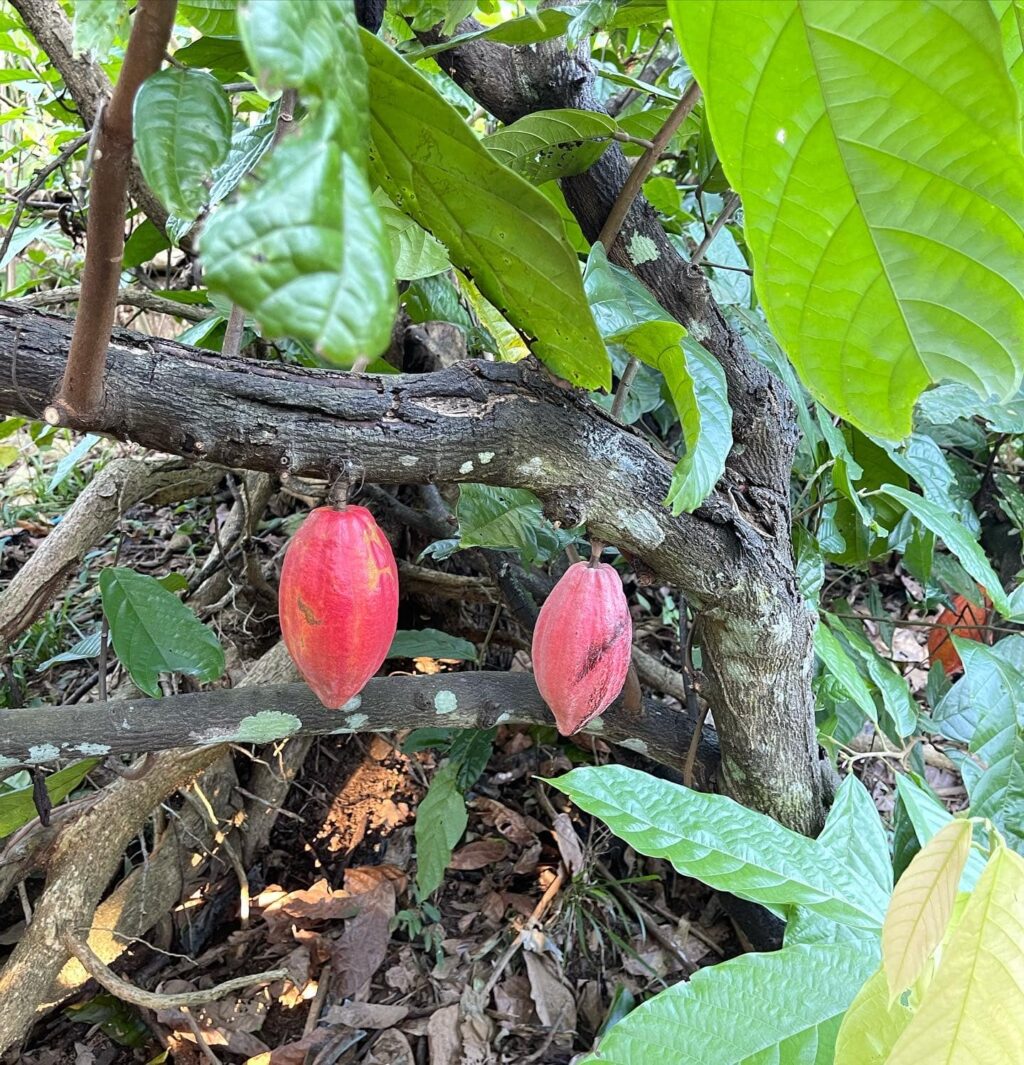
| Photo from the FB page of Dalareich Chocolate House
MANDAUE CITY, Cebu – The Philippines is in need of at least 50,000 metric tons of cacao per year.
However, local producers are only able to supply 10,000 tons or 1/5 of the actual demand, according to Bohol’s ‘chocolate princess’ Dalareich Polot, who is also the founder and CEO of Ginto Fine Chocolates and co-founder of Dalareich Food Products/ Dalareich Chocolate House.
Polot said that making matters worse was the conversion of cacao farms in Mindanao into durian farms and the worsening climate change which had been contributing to the drop in the local production.
“Climate change is a big factor in drop in productivity. Delay ang harvest last year because of changes in weather,” she said.
Challenge
The bulk of the locally produced cacao comes from Mindanao.
According to Polot, producers in Central Visayas, including Bohol province, only contribute about one percent of the local produce.
Polot (middle in pink blouse) with some of the cacao farmers in Bohol. | Photo from Fb page of Dalareich Chocolate House
It is for this reason that many of the manufacturers here, who need cacao for their products, are forced to import from abroad, Polot said.
“Right now Mindanao is cutting down cacao trees because of durian. Now, all the Central Visayas tableya makers have that problema (problem) of getting cacao beans,” Polot said.
“This is a challenge for all of us. We need to plant more cacao,” she added.
READ: From street sweeper to tableya maker to business owner
Local Production
As her contribution to the growth of the local cacao industry, Polot said, she had partnered with non-government organizations (NGOs) to help local cacao famers.
Polot said she was working with 100 cacao farmers in Carmen town and another 50 in Calape to improve local production.
“Central Visayas and Luzon should not depend on Mindanao,” she said.
Hot Sikwate made from locally produced cacao. | CDN Digital photo
Quoting data from the tagging that she led, Polot has so far accounted for 10,000 cacao trees in Carmen town, which was also the home of the Chocolate Hills, a famous tourism destination in Bohol province.
She expected to tag over 20,000 cacao trees in Carmen town, Polot said.
READ: More tablea makers can boost PH cacao industry
Post Harvest Facilities
In addition, she is also working with some local cooperatives, who function as the direct buyers of the cacao that the farmers produce.
“The cooperative will buy the wet beans from the farmers. It’s up to the cooperative if they will sell these to us. We provide the coops with post harvest facilities,” she said.
Polot said that while she worked with local producers, she was also trying to source additional cacao beans from suppliers in Palawan.
Local tableya (cacao tablets) are on display on one of the selves at the Dalareich Chocolate House. | CDND photo
Tableya
According to Polot, locally produced cacao products including the tableya (cacao tablets) are gaining popularity abroad.
Her company now exports their tableya to Japan, Australia, Sweden, among others.
“The tableya is the healthiest chocolate that you can have because you don’t put sugar in it, and that is 100 percent cacao. Foreigners don’t even cook it. They eat the dark chocolate,” she said.
Sweet chocolate, on the other hand, are already mixed with additives.
RELATED STORIES
Culinary gems, stories showcased in Suroy Suroy Sugbo
Negros firm to produce craft chocolates from local cacao
/dbs